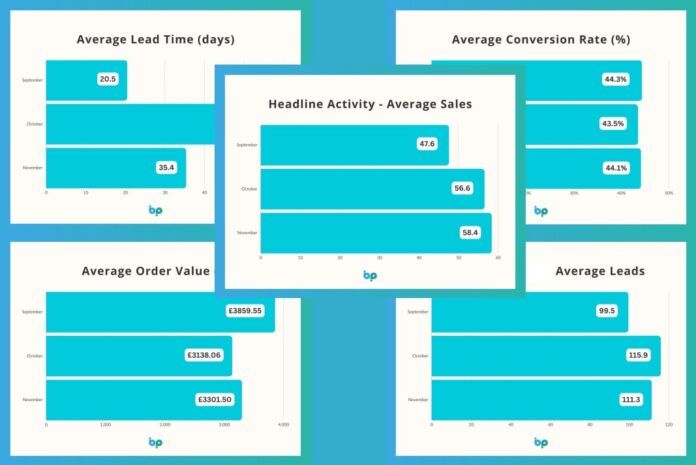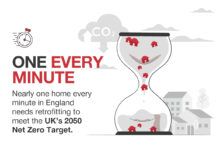
The Business Pilot Barometer offers monthly analysis of the key trends defining window and door retail. It draws on real industry data collated by Business Pilot, the cloud-based business management tool developed by installers, for installers.
By Neil Cooper-Smith, senior analyst, Business Pilot
I ended last month’s barometer by asking if we could see a positive end to a tricky year. We know that this month will see a fall in sales and leads, because that is typical of any December, but many of us will be using November’s figures to get an idea of what to expect as we head into 2024.
If I had no other contextual information, I would say that there was an element of confidence returning to the market. The reason why I am hesitant to report that confidence is because I know that the general mood music in the industry is not overly positive. I will look at that later, but first, let us examine the raw data.
Average sales have been continuing an upward trend. In November, at 58.4, they were marginally higher than October (57.2). Leads were down slightly (111.3, compared to 114.8) but the conversion rate was marginally higher at 44.1% compared to October, which was 43.6%.
On their own, these figures tell me that while the numbers of homeowners researching the market for new windows and doors are down, those who are looking are serious about buying. The reason why I think that an element of confidence is returning to the market is because lead times dropped by 34.3% – from 53.9 days in October to 35.4 days in November.
To clarify, the lead time is measured from when a prospect is captured by Business Pilot to when a decision is made to either buy or not (either pulling out of the market or going with another supplier). If leads times are drawn out, it suggests hesitancy on behalf of the buyer. Short leads times point to homeowners deciding to refurbish their homes and getting on with it.
This scenario is supported by the conversion rate. A higher number (at 44.1%, November’s was one of the highest conversion rate figures in the last two years) means that people are researching the market more carefully, and maybe choosing fewer quotes. A higher number also indicates that fewer people are pulling out of the market without buying.
This same period a year ago was characterised by fewer homeowners buying windows and doors. Average sales were 42.8 in November 2022, which was 26.7% lower than the same period this year. This was offset by a much higher average order value – £5,327 in November 2022, compared to £3,302 in November 2023. In short, we are seeing the dial turn back to a more ‘normal’ scenario.
So, why am I hesitant about suggesting that some confidence is returning to the market? When we speak to window companies and other companies within the supply chain, the general feeling is that the market is slowing. Overall, this may be the case.
With companies leaving the market (Safestyle being one high profile one) volume is distributed to other companies. So volume could be falling, while leads increase for individual companies.
But business is still there. Window companies need to position themselves to capitalise on the opportunities that are available, and that is where regularly updated data – such as the content that Business Pilot provides – really comes into its own.
For example, at a glance you can see which of your leads are still open. So, why not work harder to convert them sooner, rather than let them slip away? After all, we know they are serious about buying, so make sure it is from you.
Don’t let mood music affect your decisionmaking. Use the data at your fingertips, and get yourself in a strong position for 2024.



